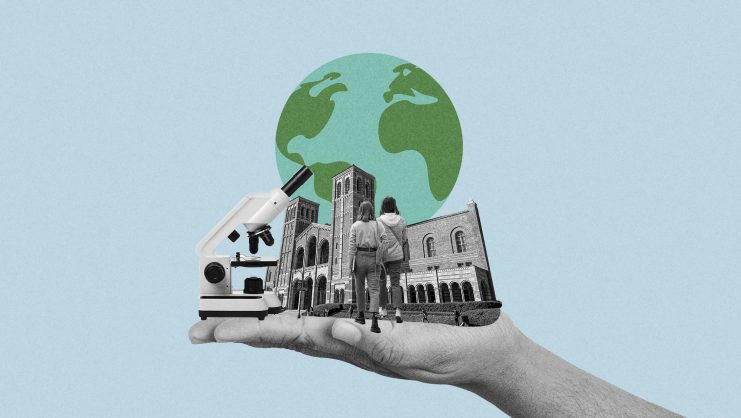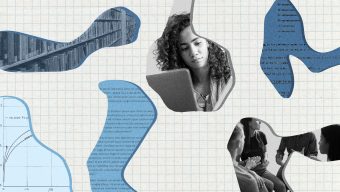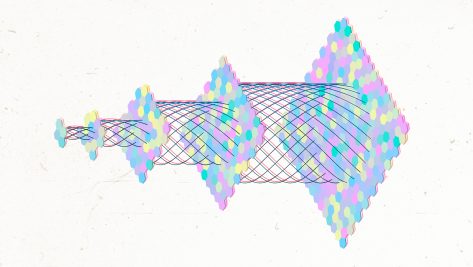When Anne Case, a Princeton economist, and her husband Angus Deaton, the 2015 Nobel Prize in Economics, looked at what they coined the “deaths of despair” in the United States, their findings showed an overlap in these deaths – from substance abuse, alcoholism, suicide, and others – and the social and economic instability across the country, including unemployment, and income stagnation.
In some segments of the US population, especially white men without a college degree, wages have stayed flat for years and have even declined since the early 1980s. Employment is less stable and comes with fewer benefits such as health insurance, which has a direct impact on many Americans’ lives. A recent report from UNICEF shows that in developed countries around the world, one in five children live in poverty. What’s more, in some communities in the US, children now have a shorter life expectancy than their parents, a phenomenon that has not been seen since the end of World War II. Recent public policies in the US aim to reverse this tendency but they cannot compensate for decades of economic erosion of the middle classes. Amid overall prosperity, Case’s and Deaton’s diagnosis is one of growing social and economic fracture, a weakening of the American dream.
Their verdict is particularly surprising if we consider the evolution of the US GDP since the beginning of the 1980s, which has grown 13 to 14-fold over this period. Sadly, this huge increase taken together translates into a very unequal distribution of income growth within the US. Over the past three decades, there has been a massive concentration of income growth in the most prosperous segment of the American population. As a result, the overall level of inequality is now approaching the level that we saw before the Great Depression, nearly a century ago.
The roots of the problem
This hollowing out of the middle class is undoubtedly due to a number of factors. Nonetheless, the one that stands out is the impact of technological transformation on our productive processes and its impact on income generation and distribution within our societies.
Emerging technologies are colliding with the current tasks and functions being performed by people in the labor market. Studies on automation and robotization have consistently shown that these technologies are going to do away with many of these tasks, and possibly with entire job categories. For example, take a look at the most common jobs in the US and “truck driver” will pop up in around half of the states. These days the deployment of self-driving trucks and vehicles is no longer science fiction, which means this very common job and its income distribution will soon be something very different.
The hollowing out of the middle class is leading to the hollowing out of the center of our political spectrum.
This process of transformation of the job market, and particularly of service-sector jobs, is not unique or unprecedented. There have been aggressive changes to the US labor market in the past, radical and to some extent very rapid. For example, between 1850 and 1970 (so in the space of just over a century), the percentage of the US active labor force employed in agriculture in the primary sector collapsed from over 60% to under 5%. The primary sector ceased to be a major generator of employment over that period. And now, since the end of the 1970s, something similar has been happening in the industrial sector.
The issue of economic stagnation and inequality is particularly relevant from a political standpoint. It exposes citizens to severe levels of stress and generates a growing sense of pessimism within society, which is highly correlated with support for populist and extremist political movements. To summarize this in one sentence, it seems that the hollowing out of the middle class is leading to the hollowing out of the center of our political spectrum.
In fact, surveys show that a growing number of citizens around the world are questioning the legitimacy of their democratic institutions and overarching political system. This equates with growing support for authoritarian leaders and declining support for institutions that are in place to serve as checks and balances to power. This phenomenon is not happening in a vacuum and it is leading to what can only be described as the implosion of the international order from within: some of the very same democracies that have built the multilateral order are now being led by political parties and movements that question that very order.
The current political phenomenon should define the mission of academic institutions
Now, why is this relevant for academic institutions? First of all, the role of academic institutions is to enable the study and understanding of challenges that affect our society – and also to put forward effective solutions for governments, corporations, and citizens to implement. Recent events have demonstrated our collective failure to understand social pain and anticipate its consequences. For example, many professionals and researchers in the academic sphere were truly surprised by events such as Brexit, the victory of Donald Trump in 2016, and the January 6 attack on the US capitol. Yet, the underlying fractures within our society that led to these events were visible.
Furthermore, the world of academia should not add to the problem of reduced social mobility. Quite the contrary. The point of education is to help make our society more equitable and fair. This has much to do with the cost of education but not only that. Schools and universities will compound the problem of social mobility if they are too difficult to access, not just in terms of financial cost – an issue that the US has long been struggling with and President Biden is attempting to bandage – but in regards to what is valued in the admissions process, which favors those who have received additional resources and support throughout their high school years.
We must ensure that equality of opportunity happens throughout a child’s education.
There are very effective solutions to this. For example, in Europe, while public education is in most cases either free or close to free, ample resources are still required to compete with institutions that have access to endowments and bigger pockets. Meanwhile, private institutions must in turn build a specific philanthropic architecture that ensures they can provide people with financial aid in a way that produces meritocratic access to their classrooms.
This should occur throughout the pipeline of education, not just at the university level, because by the time applicants arrive at college, many of the social inequities have already made an impact on their CVs and academic performance. We must ensure that equality of opportunity happens throughout a child’s education and begins at Pre-K (under five years old), a period which we now know is absolutely fundamental to the cognitive development of individuals.
Student experience is also key in promoting equity within society. Once students become a part of a university, it is important for them to encounter the realities of the world. This can happen thanks to campus activities, yes, and it is also important that they do field work off campus and be exposed to real-world social challenges that help them develop a sense of public service. This is particularly important for those who attend private universities because, for the most part and at present, the majority of these students have had the fortune of advice and support throughout their lives. It is our mission as schools to confront them with different realities and give them a more comprehensive understanding of society, to encourage them to tackle problems and to give back.
Finally, yet importantly, academic institutions have the potential to serve as ecosystems that address the critical challenges of our times. Universities are not just about the faculty and students – they also engage corporations, multilateral institutions, and governments, and can serve as a space where these stakeholders can meet to collaborate and discuss pressing issues. It is no coincidence that, throughout history, most hubs of innovation, economic prosperity, and liberal ideas have been in areas with established universities – this was true during the Renaissance in Italy and it is still true today, for example in Silicon Valley. Academic institutions are catalysts for change.
All in all, academic institutions have a huge responsibility to address the challenges facing equity, justice, and inclusion. In fact, there is no better institution than academia to take on the mission of shining a light on what ails the world, of convening society to address these issues and, importantly, of preparing our youth to not only confront and overcome what lies ahead but to embrace the opportunities of the future.
© IE Insights.











